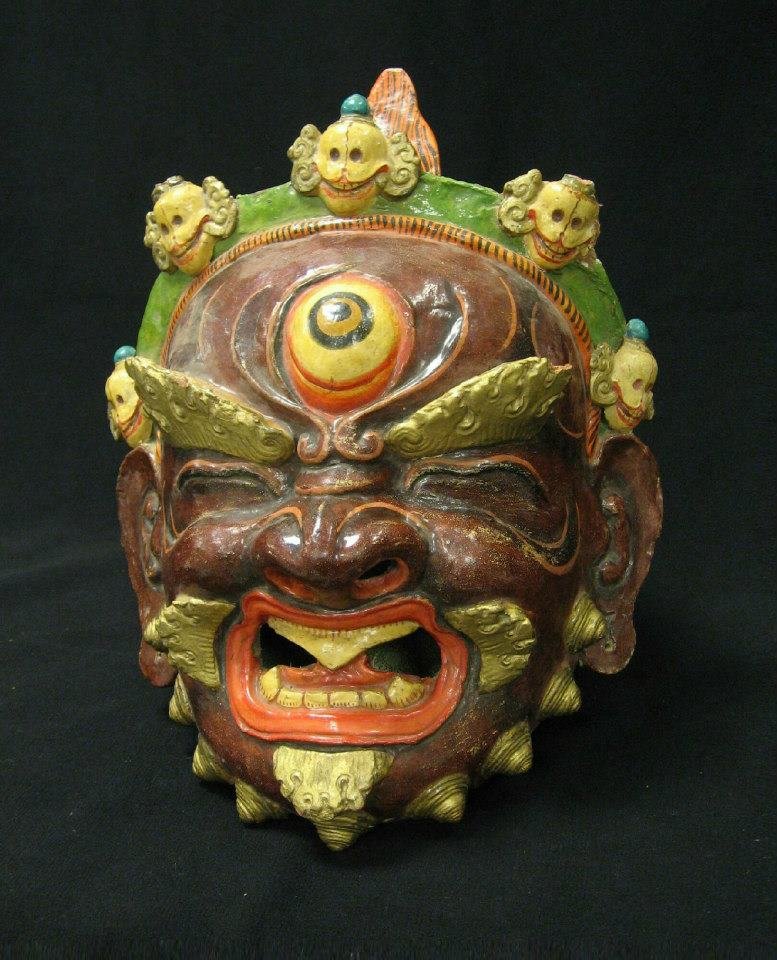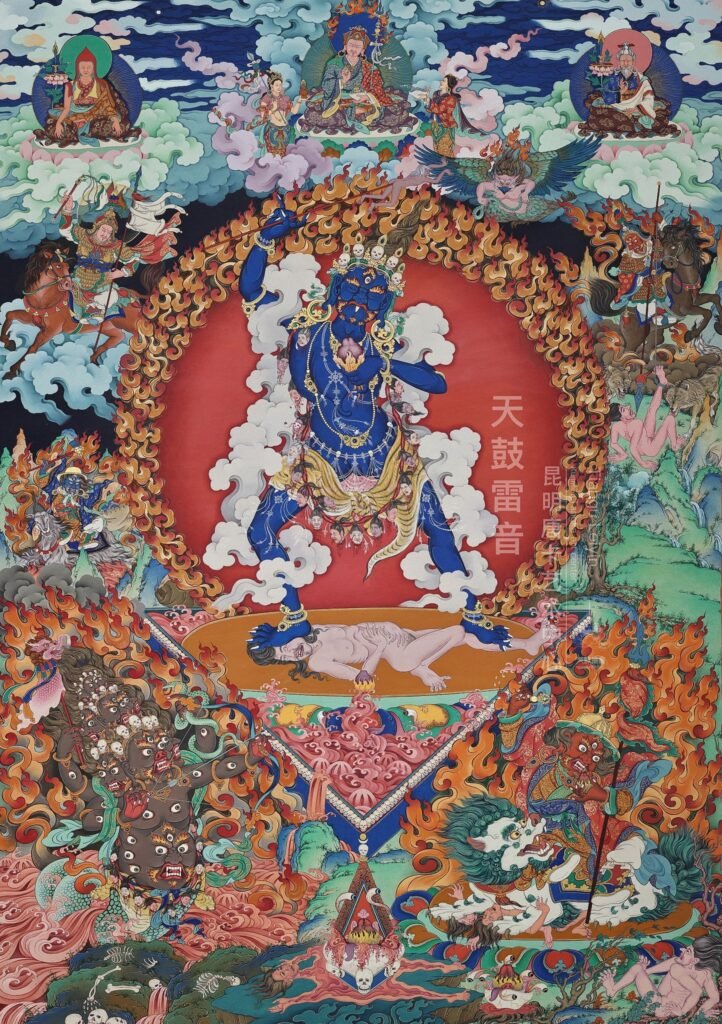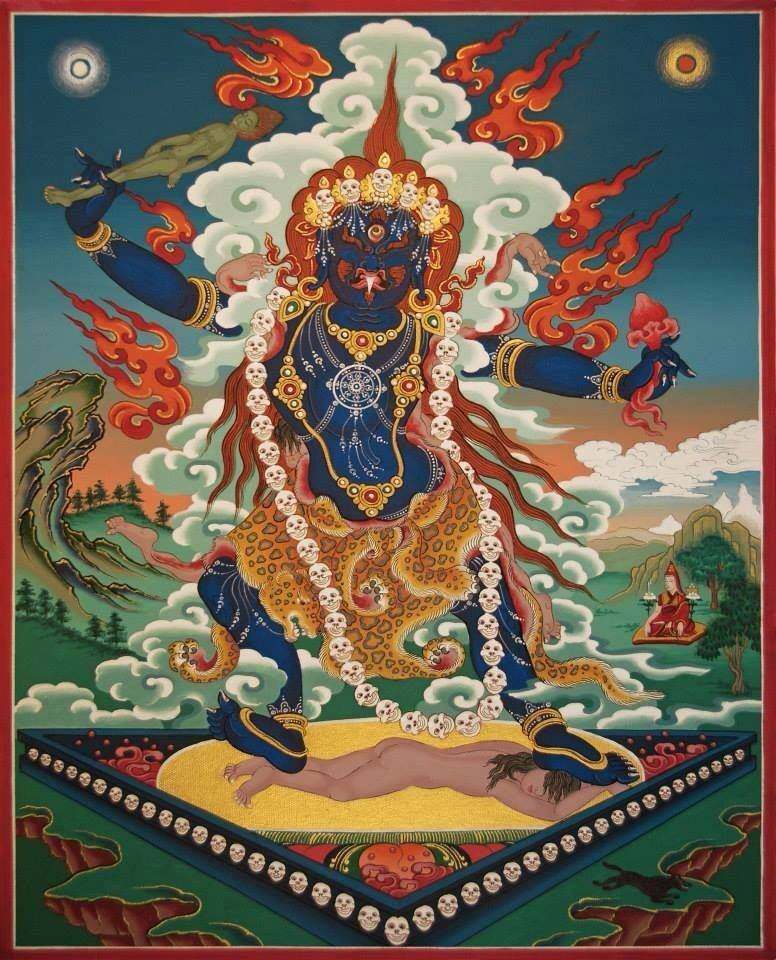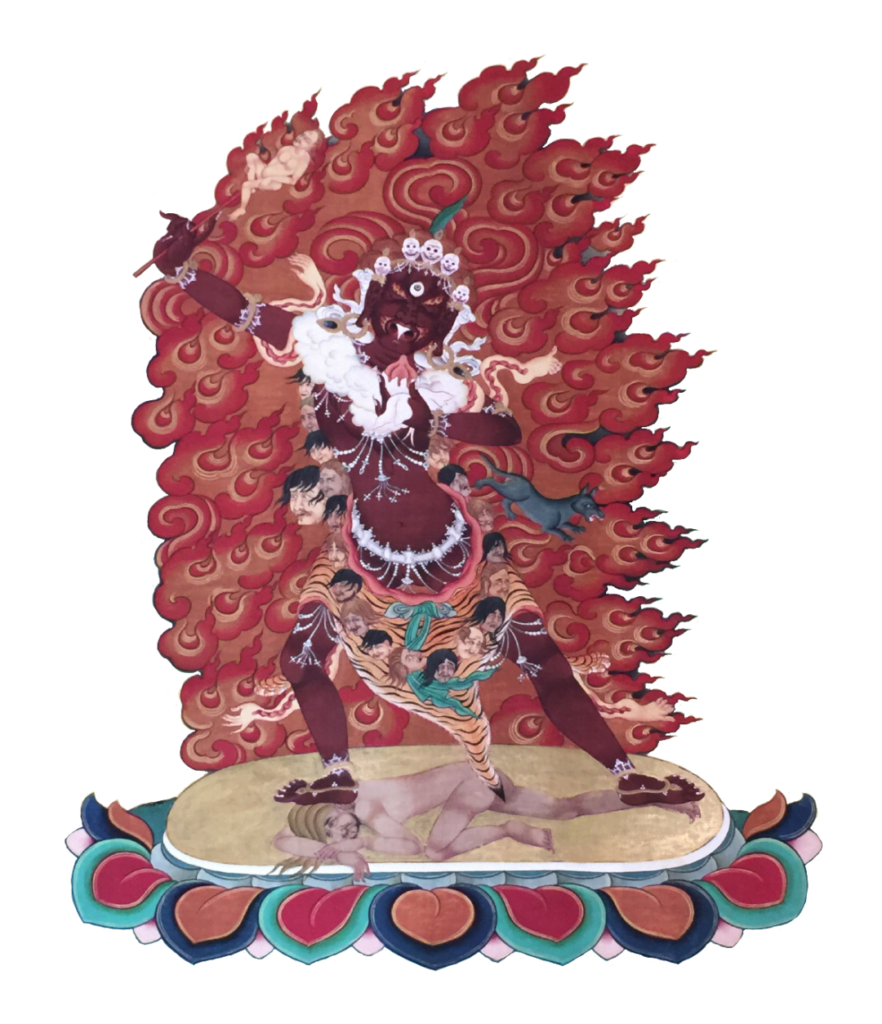Ekajati: A Unique Deity of Protection
Ekajati, also known as “One-Whisker Vajra Varahi,” (ཨེ་ཀ་ཛ་ཊི་, རལ་གཅིག་མ་) holds a revered position in Tibetan Buddhism. This deity, with a multifaceted nature, is a symbol of fierce compassion and protection within the spiritual realm. Let’s delve into the significance and stories associated with Ekajati in the Tibetan Buddhist tradition.
Significance in Tibetan Buddhism
In Tibetan Buddhism, Ekajati is more commonly recognized as a fierce protector deity, often depicted alongside Rahu, the deity representing solar eclipses. Rahu symbolizes daytime eclipses, while Ekajati represents lunar eclipses at night. Practitioners regard natural phenomena like eclipses as significant spiritual experiences, imbuing them with profound esoteric meaning. Both solar and lunar eclipses are considered moments of exceptional magical power. Ekajati is a pivotal protector in all schools of Tibetan Buddhism, but she holds particular prominence in the Nyingma tradition, where she is venerated as a chief guardian deity in the terma (hidden treasure) lineage.
Ekajati embodies a multifaceted presence in Tibetan Buddhism, representing both fierce protection and compassionate guidance. Her name, which translates to “One Whisker,” alludes to her unique and distinctive nature within the pantheon of Buddhist deities.

Ekajati in Thangka Art
In Thangka paintings, Ekajati is said to be a manifestation of Samantabhadri, the female counterpart of Samantabhadra, embodying the non-dualistic nature of reality. She is depicted uniquely with a single hair tuft, one eye in the center of her forehead, one breast, and one protruding white fang biting her lower lip, hence the name “One-Haired Mother.”
Ekajati’s body is brown, with yellow hair that flies upwards, coiling into a single braid at the tip. Her right hand, raised high, wields a staff made of a corpse, symbolizing those who attain spiritual realization in a single lifetime through the power of lunar energies. Her left hand, positioned in front of her chest, holds a skull bowl filled with blood, signifying her nourishment from the forces that terrify ordinary beings.

Ekajati’s Role as a Protector
Ekajati is esteemed as one of the most formidable protectors in Buddhism, especially in the Nyingma school, where she is considered one of the three principal guardians of the Dharma. Her portrayal in Thangka reflects her role as a guardian of transcendental teachings, emphasizing her unique attributes and powerful presence in Tibetan Buddhist iconography and practice.
Safeguarding the Lost Scripture Ekajati’s vigilant protection extends to preserving sacred scriptures. In a notable incident, Ekajati, in her role as a guardian, noticed a significant problem when a page from the sacred text “《七宝藏》” (Seven Treasures) was inadvertently dropped. Her swift intervention ensured the preservation of this precious scripture, demonstrating her unwavering commitment to safeguarding the Dharma.

Ekajati’s Compassionate Guidance
Assisting Practitioners on Their Spiritual Journey Ekajati’s compassionate side shines through in her interactions with practitioners. Anecdotes recount how she provides guidance and support to individuals like 索丹喇嘛 (Sodan Lama). Despite his fiery temper, Ekajati’s intervention ensured his safety and helped him find his way back to the group during a challenging journey. This story illustrates Ekajati’s role as a compassionate guide, helping practitioners navigate the complexities of their spiritual path.
One Whisker, One Eye – One Tooth, One Breast – One Absolute Reality
The physical attributes of One-Whisker Vajra Varahi symbolize the Dharmadhatu, the realm of ultimate reality. She embodies the fundamental wisdom that gives birth to the Buddha’s wisdom and serves as the maternal symbol of Prajnaparamita wisdom.

A Special Offering to One-Whisker Vajra Varahi – Ekajati
In this section, I present a heartfelt offering to Ekajati, who embodies the wrathful aspect of Prajnaparamita. This offering, known as the “Marma Zung” text, holds exceptional power and quick efficacy, especially when dedicated to the assembly of Dakinis. It is a unique protector within our spiritual lineage.
However, it is crucial to approach this offering with utmost reverence. Disrespectful intentions are impure and counterproductive to the practice.
Simultaneously, this offering can be made with or without physical offerings. The presence of offerings enhances the practice, but even in the absence of material offerings, it can be performed with a pure heart and in beautiful surroundings. The act of praising itself is a form of offering.

A Mother’s Gift from Afar: One-Whisker Vajra Varahi Ekajati
Depending on your aspirations and requests, Ekajati responds swiftly and can provide assistance in various aspects of modern life, including matters related to love, connections with benefactors, and overall good fortune.
Different prayers and aspirations will invoke the presence of One-Whisker Vajra Varahi, who stands by your side as a guardian. Her presence may manifest in peculiar ways, but there is no need to fear, as it is a display of her divine intervention.

